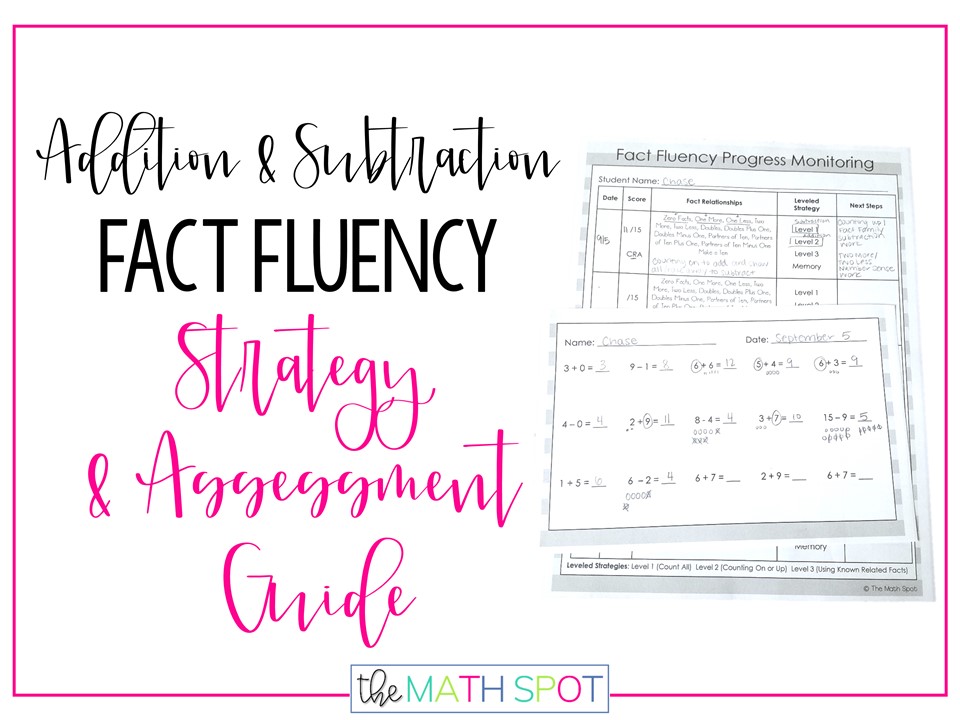You walk into a staff meeting and your admins impress upon you the importance of all of your students meeting fact fluency standards by the end of the year. Gulp. Looking around the room you see teachers wincing — you’ve all received a lot of instruction on what NOT to do. Don’t use timed tests, don’t use flash cards, don’t let any of your students leave the year without meeting standards! But what you should do? That remains a mystery.

Last year you sat in a PD sipping lukewarm coffee listening to a colleague talk about the transformation that happened in their room when they implemented number talks… but you tried it and felt all over the place it wasn’t enough of a system!
You need a system that will allow you to teach and assess your students so you can feel confident that they are learning in a way that is developmentally appropriate while getting to those all important end of the year goals.
I’ve created a gift for you. It’s free. No strings attached. A 30-page strategy and assessment guide handed to you on a silver platter. Over the years I’ve pulled the best parts of the information I have read from a variety of amazing sources and have refined a system that worked best for me and my students. I want to share it with you!
Here’s the main gist:
- Give an assessment. No, it’s not a straight “timed test” and no, you won’t be spending days a time interviewing each and every one of your students individually. I’ve found a happy medium that allows me to get maximum information in minimal time.
- Understand your fact relationships. No more memorizing 200 individual addition and subtraction facts. You will find the one next fact relationship your students are ready for and zone in on it.
- Understand levels of support. If you have been here before you know I am all about the CRA framework of math instruction. It works for teaching facts too!
- Build number sense. There are 4 main number relationships that inform number sense. Knowing these relationships allows you to exploit them so that your students are building number sense and learning their facts more efficiently than you have ever expected.
That’s it! Give an assessment and then make decisions that allow your students to work smarter, not harder. I’ll admit, it sounds like a lot to consider all at once but go ahead and grab the guide (did I mention, it’s free?) and I will walk with you as you transform your fact fluency instruction!
(Free) Fact Fluency Guide





